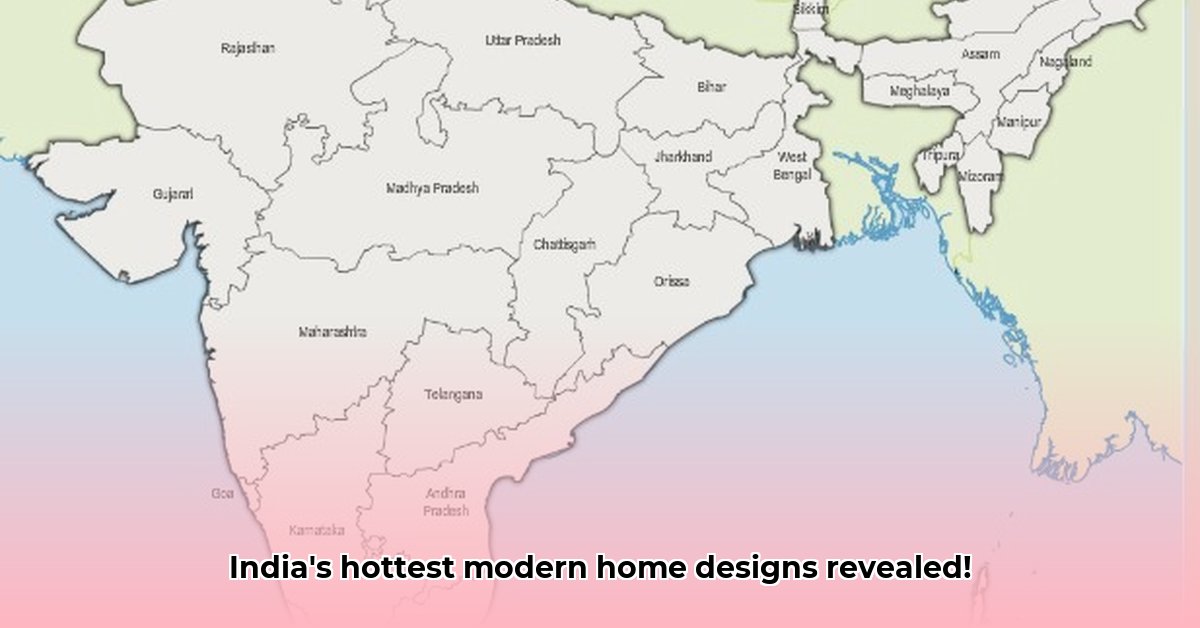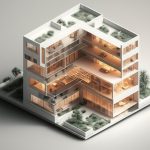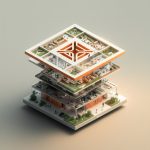Thinking about building a modern home in India? This comprehensive guide unveils the latest trends and ideas. We’ll explore how modern designs are harmonizing with traditional Indian styles, showcasing stunning examples and addressing the challenges architects face, such as maintaining sustainability and adhering to budgets. Discover ingenious methods to make your home both eco-friendly and stylish, and learn how to select the perfect architect to transform your vision into reality. For more modern house plans, check out [these designs](https://www.wavesold.com/modern-house-plans-designs-in-india). Welcome to the captivating realm of modern Indian home design!
India Modern House Design: Trends Shaping the Future of Homes
Dreaming of building your ideal home in India? The landscape of modern Indian house design is brimming with novel concepts, seamlessly merging traditional elegance with state-of-the-art aesthetics and sustainability. Let’s delve into the thrilling trends influencing home construction in 2023 and beyond, with an emphasis on space optimization, sustainable materials, and climate-conscious design.
Key Design Trends: A Fusion of Tradition, Modernity, and Eco-Consciousness
Modern Indian homes are increasingly focused on integrating the outdoors. Expect to see expansive open floor plans that maximize sunlight, fostering a sense of spaciousness and airiness. While this trend enjoys global popularity, its adaptation in India is uniquely tailored to our climate and lifestyle. Sustainability is also paramount; homeowners are increasingly choosing eco-friendly materials and energy-efficient technologies to minimize their environmental impact. This approach transcends mere aesthetics, embodying a commitment to responsible living by employing natural ventilation, abundant natural light, and passive cooling techniques.
Here are integral points shaping design trends:
- Seamless Indoor-Outdoor Living: Open layouts enhance natural light and create spaciousness, aligning perfectly with the Indian lifestyle’s emphasis on community and connection with nature.
- Eco-Friendly & Sustainable: Prioritizing materials and technologies that reduce environmental impact, ensuring homes are both beautiful and responsible.
- Blending Tradition & Innovation: Skillful integration of traditional Indian elements with contemporary architectural methods, creating homes that honor the past while embracing the future.
- Climate-Responsive Design: Utilization of design and materials that respond effectively to local climatic conditions to maximize comfort and minimize energy consumption.
Envision exquisite terracotta jaalis—intricate lattice screens—offering privacy while facilitating the flow of gentle breezes. Skylights flood interiors with natural light, diminishing reliance on artificial illumination. Architects are ingeniously interweaving traditional Indian motifs with modern technologies, resulting in a harmonious blend of heritage and innovation. It’s a captivating union of the past and present.
For instance, picture a modern kitchen showcasing sleek, stainless steel appliances complemented by classic wooden cabinetry, resulting in a distinctive and refined fusion. Or perhaps a living area featuring a courtyard, a common element in traditional Indian homes, reimagined as a serene zen garden or a contemporary water feature.
These designs are not just aesthetically pleasing; they offer practical solutions tailored to the Indian context and the local environment, addressing issues such as ventilation, temperature control, and efficient use of space.
The Challenges: Navigating Budget, Climate, and Fostering Creativity for Sustainable Solutions
Constructing a dream home in India presents unique challenges. Budget constraints are frequently a primary concern. Reconciling ambitious architectural concepts with realistic financial parameters necessitates meticulous planning and judicious material selection. India’s diverse climate—ranging from arid deserts to humid coastlines—demands careful design considerations. A home conceived for the balmy south will starkly differ from one destined for the parched north, influencing materials, orientation, and layout to suit regional preferences.
These challenges serve as catalysts for innovation. Architects are developing ingenious solutions, discovering affordable materials that are not only aesthetically pleasing but also sustainable and ecologically sound. They are embracing unconventional approaches, integrating local resources, and, where appropriate, adopting traditional construction methods to ensure buildings harmonize with their surroundings.
Stunning Examples: A Portfolio of Modern Indian Homes and Smart Design
Let’s explore essential features that define modern Indian homes. While not exhaustive, this compilation illustrates the spectrum of styles and techniques employed, including multi-functional rooms, built-in furniture, green spaces, and smart home technology.
| Feature | Description | Example |
|---|---|---|
| Open Floor Plans | Expansive, airy layouts maximizing natural light and creating fluid transitions between living spaces, enhancing social interaction and family connectivity. | Living rooms seamlessly connected to dining areas and kitchens, fostering an inclusive and interactive atmosphere. |
| Natural Light | Strategic placement of skylights, expansive windows, and courtyards to reduce reliance on artificial lighting, conserving energy and enhancing the ambiance. | Homes oriented to optimize sunlight exposure throughout the day, complemented by reflective interior surfaces to amplify natural light. |
| Sustainable Materials | Utilization of bamboo, recycled timber, and locally sourced stone; environmentally conscious selections that also offer visual appeal and contribute to a healthier indoor environment. | Residences constructed with materials that minimize environmental impact while maximizing thermal efficiency and reducing the building’s carbon footprint. |
| Traditional Elements | Incorporation of features such as jaalis, courtyards, verandas, and other vernacular architectural elements to preserve a connection to India’s cultural heritage and craft traditions. | Modern interpretations of traditional design elements, such as a contemporary courtyard that serves as a focal point and enhances natural ventilation. |
| Climate-Responsive Design | Design solutions that effectively respond to local climatic conditions, reducing energy consumption through natural ventilation, shading, and optimized building orientation. | Homes designed with deep overhangs to provide shade, strategically placed windows to capture prevailing breezes, and rainwater harvesting systems to conserve water resources. |
| Smart Home Technology | Integration of technology to enhance energy efficiency, security, and comfort, reflecting a blend of sustainability and futuristic design. | Implementing smart lighting systems, automated climate control, and remote security features to optimize energy use and enhance the living experience. |
| Green Spaces | Incorporating indoor and outdoor green areas, such as vertical gardens, rooftop gardens, and landscaped courtyards, to improve air quality and promote a sense of well-being. | Homes featuring integrated green spaces that not only add aesthetic appeal but also help regulate indoor temperature and reduce the urban heat island effect. |
| Multi-functional Spaces | Designing areas that can adapt to various needs, such as a living room that doubles as a home theater or a guest room that functions as a study. | Rooms equipped with modular furniture and flexible layouts that can be easily reconfigured to accommodate different activities and spatial requirements. |
Advice for Clients and Architects: Promoting Collaboration and Technology Integration
For Homeowners:
- Conduct Thorough Research: Explore diverse architectural styles and identify an architect whose vision aligns with your own. Evaluate their portfolio, examine reviews, and ascertain whether their values and design philosophies resonate with your aspirations.
- Prioritize Sustainability: While initial investments may be slightly higher, opting for sustainable materials and practices yields long-term dividends, both financially and ecologically.
- Understand Local Regulations: Familiarize yourself with local building codes, zoning laws, and environmental regulations to avoid complications and ensure compliance throughout the construction process.
For Architects:
- Embrace Technological Innovation: Leverage modern technologies—from sustainable building materials to digital design tools—to enhance efficiency, reduce costs, and improve design outcomes.
- Foster Collaborative Partnerships: Engage closely with clients to gain a deep understanding of their needs and preferences. A collaborative ethos ensures project success and client satisfaction.
- Champion Sustainable Practices: Advocate for the use of sustainable materials, energy-efficient designs, and climate-responsive solutions to minimize the environmental impact of building projects.
The Future of Modern Indian Homes: A Vision of Sustainable and Personalized Design
The trajectory of Indian house design is exceptionally promising. We anticipate even more inventive applications of sustainable materials and technologies, alongside a continued synthesis of traditional elements and modern sensibilities. Homes will become increasingly tailored to reflect the distinct needs and tastes of their inhabitants, with designs that enhance both quality of life and environmental sustainability.
Ultimately, the most successful homes will embody beauty and functionality, while narrating the unique stories of those who dwell within their walls. The journey towards crafting these quintessential homes is ongoing, with limitless possibilities that propel design toward ever-greater heights of innovation and personalization.
How to Overcome Budget Challenges in Modern Indian Home Design Using Regional Materials
Designing a breathtaking, modern Indian home doesn’t require exorbitant spending. It necessitates intelligent choices that harmoniously blend contemporary aesthetics with financial prudence while emphasizing passive design strategies, local resources, and energy-efficient solutions.
Smart Space Planning: Optimizing Square Footage and Vertical Space
Effective space optimization is critical. Prioritize open floor plans that create a sense of expansiveness without increasing the overall footprint. Incorporate multi-functional furniture, such as sofa beds or storage ottomans, that cleverly serve dual purposes. The strategic use of mirrors can visually enlarge smaller rooms, enhancing the sense of space. Consider whether an extra bedroom is essential or if a home office/guest room combination would suffice.
Sustainable Materials: Eco-Friendly and Budget-Conscious with Local Timber
Adopting sustainable materials is both ecologically responsible and cost-effective. Locally sourced timber, such as bamboo or reclaimed wood, offers unique character at a lower cost than imported alternatives. Consider utilizing locally sourced bricks or natural stones that are readily available. This approach reduces transportation expenses and supports local economies.
Color and Texture: En
- Glass Tile Shower Ideas to Create a Stunning Bathroom Space - December 7, 2025
- Glass Wall Tile Ideas for Kitchens and Bathrooms - December 6, 2025
- Glass Tile Bathroom: Create a Beautiful, Easy-Clean Space - December 5, 2025










